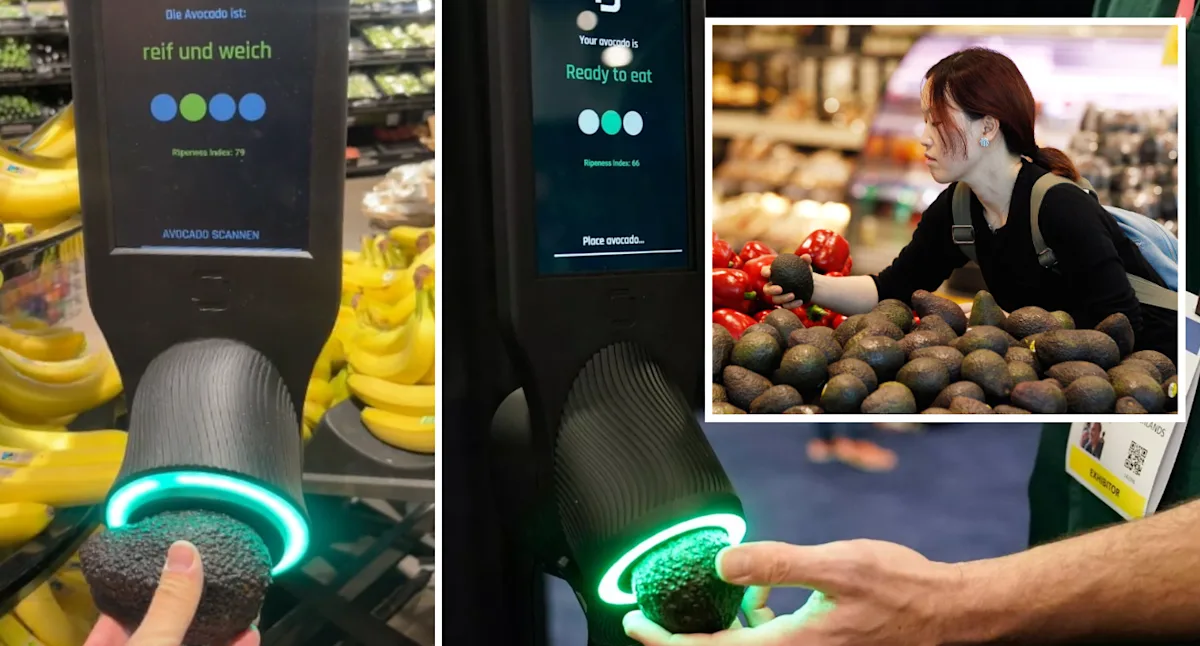Researchers have developed an artificial intelligence system for smartphones that can accurately predict the internal quality and maturity of avocados.
Luyao Ma, an assistant professor at Oregon State University, said, “Avocados are one of the most wasted fruits in the world because of their overripeness.” “Our goal was to create a tool that would assist consumers and retailers in making better choices regarding the use and sale of avocados.”
The research team, which included scientists from Florida State University and Oregon State, trained AI models using more than 1,400 iPhone photos of Hass avocados. The algorithm predicted internal quality (fresh vs. rotten) and hardness, a critical ripeness indicator, with over 84% and 92% accuracy, respectively.
The researchers believe that these accuracy rates can be increased as more photos are added to the program. They also say that the technology could be used to assess the ripeness and quality of different types of food.
They plan to develop the technology so that consumers can use it at home to determine when an avocado is the best time to eat it, avoiding the disappointment of cutting into one and finding the dreaded brown spots.
The technology may also be used to enhance fruit sorting and grading in avocado processing facilities, according to the group. For example, if the algorithm decides that a batch is more ripe, it might be sent to a nearby merchant instead of one further away. Retailers may also use the technology to determine which avocados should be sold first based on maturity.
These findings build on previous research that used images and machine learning techniques to assess food quality. According to In-Hwan Lee, a PhD student working with Ma on the subject, prediction performance was hindered by earlier research’s reliance on manual feature selection and traditional machine learning algorithms.
“We used deep learning techniques that automatically capture a wider range of information, including shape, texture, and spatial patterns, to improve the accuracy and robustness of avocado quality predictions,” Lee said.
Ma chose to focus on avocados due to their high market value and high waste rate. She also shared a personal motivation: she often eats avocado toast and was often frustrated by having to cut into overripe avocados because she was unable to determine when they were ripe enough.
In the future, the team envisions expanding the system beyond avocados to include other perishable produce such as mangoes, peaches, and bananas. By leveraging smartphone cameras and AI-based prediction models, this innovation could make food quality testing more accessible and affordable worldwide. Such applications would not only benefit consumers but also farmers, suppliers, and food distributors by improving logistics, reducing waste, and increasing profits across the agricultural supply chain.
The study addresses food waste, a major global problem. Around 30% of the food produced globally is wasted. To address this issue, the U.S. Department of Agriculture and the Environmental Protection Agency have set a national goal to reduce food waste by 50% by 2030.
“Avocados are only the first step,” Ma said. “More people could use this technology to help consumers, retailers, and distributors make better decisions and reduce waste.”
The findings were recently published in Current Research in Food Science. Zhengao Lee from Florida State University is another co-author on the paper. Ma and Lee are employed in the Department of Food Science and Technology at Oregon State University’s College of Agricultural Sciences. technology at Oregon State’s College of Agricultural Sciences.
